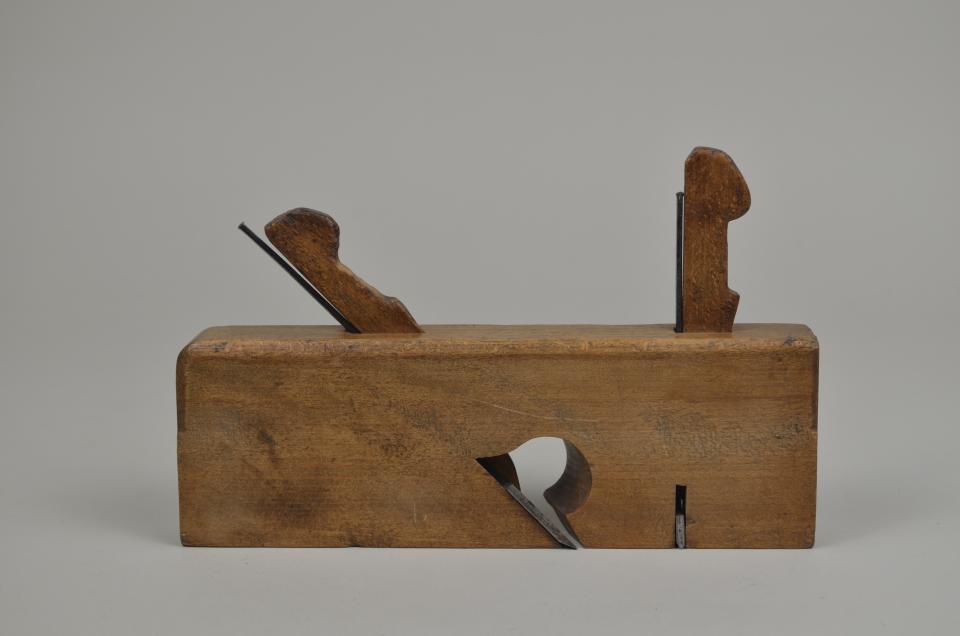
L: 23.4cm W: 3.1cm H: 12.7cm
a- L: 23.4cm W: 3.1cm H: 8.7cm
b- L: 13.0cm W: 2.4cm H: 0.8cm
c- L: 12.9cm W: 2.1cm H: 0.3cm
d- L: 13.6cm W: 2.3cm H: 0.8cm
e- L: 17.2cm W: 2.1cm H: 0.3cm
A wooden dado plane consisting of 5 parts.
a- The body is rectangular and made of a light brown hardwood. The throat cuts diagonally through the middle of the body and ends in a bell-shaped mouth that is exposed on both sides. The sole is flat with a rabbet running along the back edge. A brass piece sits in the back body just ahead of the mouth and acts as a depth stop for the double spur (c). It is secured with a round-headed slotted screw. Stamps on the toe read: "J.DRYBURGH/BRIGH,ONT"; "I BLOWER". Stamps on the heel read: "I BLOWER"; "7/8".
b- The first wedge is made of the same hardwood as the body. It tapers to a chisel edge on one end and is rounded on the other in an oblong form. A cut-out below the head allows for easy handling.
c- The double-spur is a narrow strip of dark grey metal. It abruptly widens near the cutting edge. The cutting edge is wide-set, with a flat edge and two sharp spurs at each end.
d- The second wedge is similar in shape and colour to the first (b). The proportions are slightly different and the piece in its entirety is slightly bigger than (b).
e- The cutting iron is a narrow strip of dark grey metal. It abruptly widens near the cutting edge. The cutting edge is flat and slightly angled. The width of the cut is 3/4".
Dado planes are used to cut dado grooves, strict rectangular grooves with straight bottoms and shoulders. Dado grooves are worked across the grain. A double spur is installed in front of the cutting iron, and cuts two trenches on either side of the blade. This way, the blade can dig out material with minimal tear-out and exceptionally clean lines. This plane was traditionally used for preliminary work in wood floors or to cut grooves for bookcase shelves. When working across the grain, the artist must first make a reverse stroke to ensure the double spur cuts through the surface of the wood.
